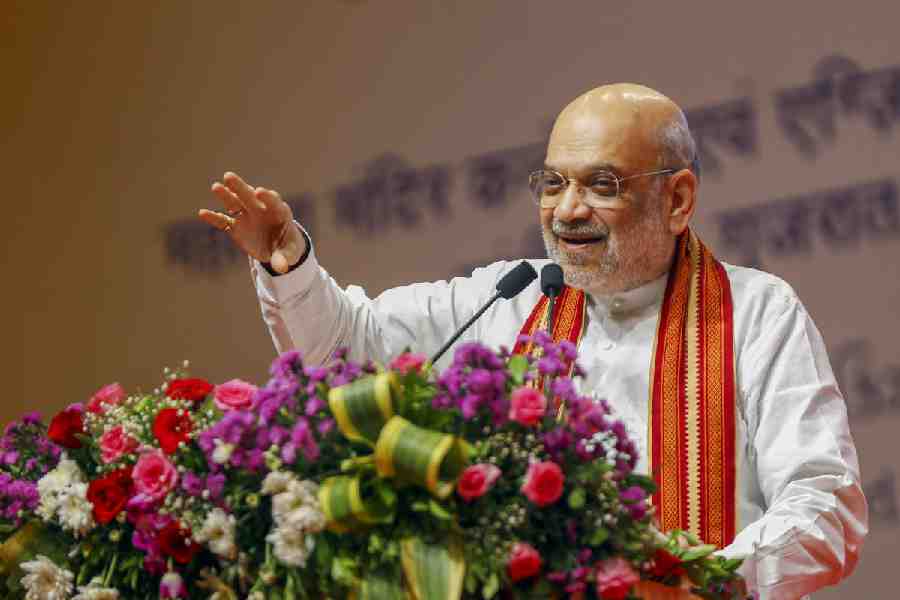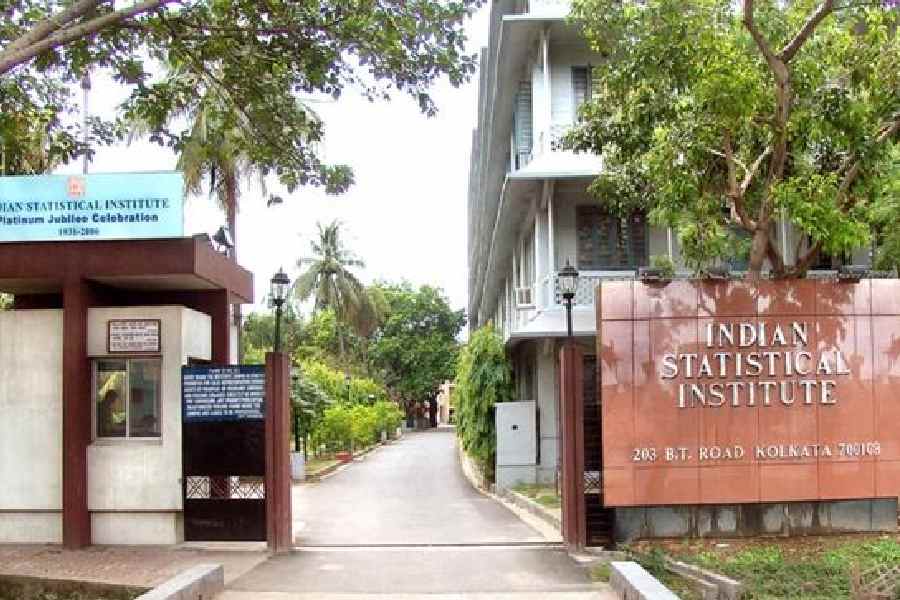 |
Uttam Chand Arya has had the best of both worlds. The programmer at technology consulting firm Capgemini in the Netherlands joined a dual masters degree at the Manipal Institute of Technology three years ago. He spent his first year in Manipal in Karnataka, and the second year in the Netherlands.
“I got lots of exposure in programming in India. In Holland, the emphasis was on mathematics and doing things very precisely, which I never experienced in India,” says Arya, who earned an MTech (Software Engineering) from Manipal and an MSc (Computer Science Engineering) from the Technical University of Eindhoven in the Netherlands.
If Arya had opted to go to the Netherlands to study on his own, he would have had to pay Euro 32,000 (Rs 21 lakh) for the rounded academic experience of studying in two countries. He paid considerably less. Like Arya, many have benefited from similar collaborations between Indian and foreign universities. In general, students enrolled in twinning courses — where they spend two years in India and two years abroad for a foreign degree — pay a third of the fees that the foreign institutes charge.
Eye on India ● Georgia Institute of Technology ● CERAM Business School, France* ● Oxford University’s Said Business School* ● University of Greenwich, UK (with Tasmac, Pune) ● University of Rio Grande, US (with Tasmac, Pune) ● University of Houston (with collaborations) ● City University London (with Great Lakes Institute of Management, Chennai) ● University of Switzerland (with Eastern Institute for Integrated Learning in Management, Calcutta) ● BR Institute of International Business Relations, India, to go pan India in two years ● Deakin University, Australia, exploring MTech collaboration with an IIT * Based on market information; no |
And this, experts hold, is just the beginning of a revolution that’s brewing in the higher education sector. Foreign universities and academic and training institutes are waiting for India to open its doors to them. Some like the Georgia Institute of Technology (Georgia Tech) in the United States want to set up their own campuses. Others want to expand existing tie ups or forge new ones (see box). “Every month I get an offer from a foreign university for some collaboration,” says Giri Dua, chairman and managing director of the Pune-based Training and Advanced Studies in Management and Communications (Tasmac). In 2008, a delegation of deans from the University of Houston (which has eight partnerships with Indian institutions) visited 22 Indian universities and colleges. Academic collaborations could result, says Jerald W. Strickland, assistant vice-chancellor and vice-president for International Studies and Programs in Houston. Georgia Tech is discussing with industry and the government the possibility of setting up a research campus, says provost Steve McLaughlin.
Clearly, there is a growing foreign interest in Indian educational institutes. The Federation of Indian Chambers of Commerce and Industry’s annual Higher Education Summit sees 60 to 70-strong delegations from Canada, Britain, Australia and the US. After the India-United States Strategic Dialogue — in which education is an important pillar — was inked, 20-odd American universities wrote to the US state department, expressing interest. “India is definitely on the radar,” says Amitabh Jhingan, a partner at consulting firm Ernst & Young.
Education finds a mention in a working group study on a proposed free trade pact between India and New Zealand. New Zealand, Australia, the US, the United Kingdom, Brazil, Japan and Canada are co-sponsoring a joint request at the World Trade Organisation seeking the opening of India’s higher education sector. In Canada, India is among the top three priority markets for international education promotion.
What’s drawing everyone here? The huge market, for starters. Indian students spend an estimated $13 billion on foreign education every year. Indians comprise the largest group of foreign students in the US, the fourth largest foreign group in Canadian universities and account for a fourth of international students in New Zealand.
 |
| Said Business School at Oxford University |
 |
| Deakin University, Australia |
 |
| Georgia Institute of Technology, Atlanta |
India’s very large and youthful population and its desire to provide future generations with greater opportunity have created a demand for education which has caught the attention of educational institutions in America,” says Larry Schwartz, minister-counsellor for public affairs at the American embassy in Delhi.
But it isn’t the numbers alone. “India has huge intellectual potential both in academia and research,” notes Dinos Arcoumanis, deputy vice-chancellor (research and international) at City University London, which has collaborations with 15 Indian institutions and is ready for more. “Foreign universities are coming because the enormous human resources generated here will serve the entire world,” adds human resource development minister Kapil Sibal.
A PricewaterhouseCoopers (PwC) study points out that one out of 150 applicants gets into an Indian Institute of Management versus one out of 10 in the case of the Massachusetts Institute of Technology. Overcrowding in Indian universities is one reason Indian students go abroad, even to second and third-tier universities. “There’s no way the government alone can bridge the gap,” says PwC’s executive director Dhiraj Mathur.
Sibal wants to increase the number of students enrolling for higher education from 12 per cent of the eligible age group to 30 per cent. Allowing foreign universities to come in is just one of a whole gamut of initiatives necessary to expand opportunities, he points out. And make top-dollar education more affordable. For many students, even the tie ups make good financial sense. A four-year engineering degree costs $35,000 (Rs 17 lakh) a year in the US against Rs 2.5 lakh a year at Manipal. In a twinning arrangement the student spends Rs 3.75 lakh a year for the first two years in India, and Rs 17 lakh every year for two years abroad.
Some foreign institutions will also bring in innovative programmes and new courses of study, points out Aseem K. Chauhan, chancellor of Amity University, Rajasthan. The competition may set benchmarks for Indian universities and institutions.
But all this will only happen if the government is willing. Right now, on paper, foreign institutions can operate in India — 100 per cent foreign direct investment (FDI) in the education sector has been allowed since 2002 — provided they conform to domestic rules. But they are keeping away since profit-making bodies are barred from the education sector, and there is some confusion about whether FDI can come into the not-for-profit sector. Cumbersome approval procedures are another deterrent.
So the institutes have collaborations with Indian institutions — twinning agreements, dual degrees, student and faculty exchange programmes, research collaborations and curriculum development.
 |
But there’s a cloud over many of these. The All India Council for Technical Education (AICTE) has regulations relating to foreign institutions. Its website lists only six approved collaborations, while the unapproved ones number 69. Though the lack of AICTE approval doesn’t seem to have affected the demand for these institutions or courses, many are waiting for clearer rules before forging new alliances. Tasmac has tied up with Britain’s University of Greenwich and the University of Rio Grande in the US for courses in information technology and management programmes, respectively, but is waiting for clear policy directions.
A Bill — hanging fire since 2007 — may clear up some issues when passed. The Foreign Educational Institutions (Regulation of Entry and Operations, Maintenance of Quality and Prevention of Commercialisation) Bill seeks to regulate the entry and functioning of foreign education providers. “Many Canadian institutions would be interested in applying to start operations in India once the Bill is passed,” a spokesperson for the Canadian High Commission says.
Even then, the top-notch universities won’t exactly rush in to set up campuses here. Georgia Tech, with campuses in five countries, is an exception. It may collaborate with local institutions in a research consortia effort, says McLaughlin, but would prefer to establish an independent campus if regulations permit.
Most foreign schools want to come in association with a strong Indian partner, notes H. Vinod Bhat, registrar, international programmes, Manipal University. “There is an important social dimension of overseas education which is missed when one offers degree courses at offshore campuses,” says Arcoumanis. Australia’s Deakin University is also cautious. “If India opens the sector, the temptation would be for money making institutions to come in. We don’t want to put ourselves in that space,” says Peter Hodgson, director, research, Deakin.
The ones that will make a beeline to set up campuses will include commercially-focused entities and some of the second-tier schools that already get a large number of Indian students. “This is a model that will scale rapidly,” observes Jhingan.
The interest from institutions providing vocational and professional education will also be high, notes Mathur. The Institute of International Business Relations (IBR) of Berlin’s Steinbeis University, which set up IBR India at Hyderabad in 2008 to offer a part-time MBA, will move to Bangalore, Chennai, Kochi and other cities in the next two years.
Not everybody is cheering these developments. “Foreign universities are targeting the cream of the market and will turn out to be elite enclaves. The rest of the higher education system will suffer,” argues CPI(M) researcher Prosenjit Bose. No, counters Sibal. “Higher education is elitist right now. We want to make it less so.” Universities want more and brighter students and will look for the best in brain power and not money power, Sibal says.
One concern that the government shares with the detractors of foreign universities is the entry of fly-by-night operators which may close midway through a course, or give out degrees that are not recognised. Though details of the Bill are not available, it may address some problems. Foreign institutions may need to show a huge corpus, and repatriation of profits generated in India may be barred. But then, such provisions could dampen interest, as could regulations that control fees, salaries, faculty recruitment and impose community-based reservations. “We will have to strike a balance,” says Sibal.
The student community is waiting for him to do so.











